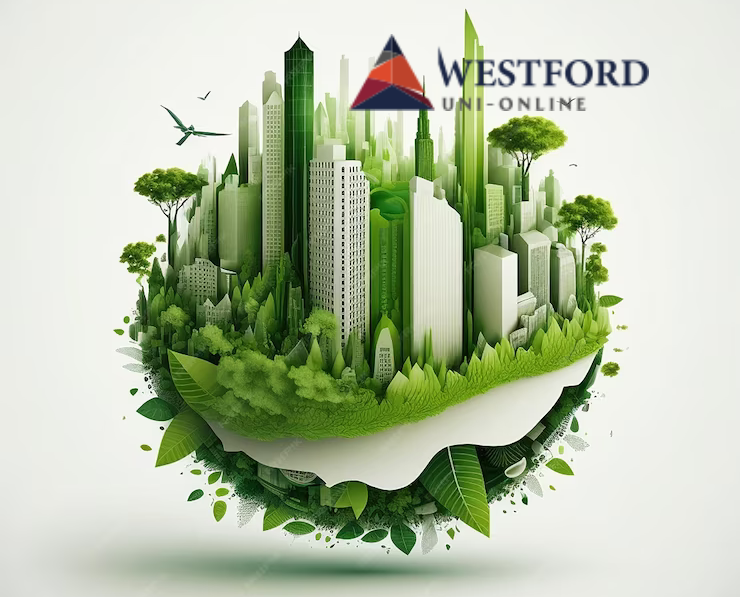The last decade has been marked the hottest period in recorded human history. Incidents of apocalyptic fires, floods, cyclones, and hurricanes are becoming increasingly commonplace, and global emissions have surged by 62 percent.

The evidence is unequivocal. We find ourselves in a race against time to adapt to the swiftly evolving climate, which is one of the three critical planetary crises we confront, alongside biodiversity loss, pollution, and waste. The construction industry holds a crucial role in our efforts to limit global warming to well below 2°C.
Some estimates suggest that investing in more resilient infrastructure could potentially save humanity a staggering $4.2 trillion in climate change damages.
Below mentioned are some of the strategies for constructing buildings and community spaces that enhance resilience, particularly in developing countries where settlements are predominantly self-built.
1. Enhancing Resilience Against Heatwaves:

Research indicates that by the year 2050, over 1.6 billion individuals residing in more than 970 cities will routinely face extreme high temperatures.
Communities can establish urban forests and green spaces to mitigate heatwaves in cities, as trees and other vegetation contribute to cooling the environment by providing shade and releasing water through their leaves.
Trombe walls, substantial structures made of materials like concrete or stone that capture solar heat, are utilized in China, Chile, and Egypt. Implementing green roofs and reflective surfaces can also effectively lower temperatures both inside and around buildings.
You may also be interested in reading: A Pathway to Thriving Careers in Oman’s Growing Hydrogen Industry
2. Developing Resilience Against Cyclones and Strong Winds:

Anticipated to increase in frequency and intensity due to climate change, cyclones and storms pose significant threats to buildings, causing roof displacement and structural damage. To mitigate such risks, communities can adopt measures like constructing round-shaped houses and optimizing aerodynamic orientation to diminish wind force. The design of roofs is crucial in enhancing wind resilience. Establishing robust connections between foundations and roofs is essential for building houses that can withstand strong winds. Roofs with multiple slopes demonstrate better stability in such conditions, and the installation of central shafts can reduce wind force by drawing in air from outside.
3. Enhancing Resilience to Coastal Flooding:

The looming threat of coastal flooding and rising sea levels puts approximately 410 million people in coastal communities at risk by 2025.
In Kerala, India, houses resistant to flooding are erected on pillars, enabling floodwater to pass underneath.
Along the coasts of Malaysia, buildings elevated 2 meters above ground level facilitate water flow, fostering the growth of wetland vegetation underneath.
4. Enhancing Resilience Against Drought:

The shifting patterns of rainfall worldwide due to climate change have prompted the adoption of various strategies.
Rainwater harvesting and recharge systems, designed to capture water on building roofs, are widely employed to store water during droughts and minimize flood risks during heavy rainfall.
In China, the Sponge Cities Project is pioneering eco-engineering solutions in more than 30 metropolises to absorb and repurpose rainwater, effectively reducing the threat of flooding.
You may also be interested in reading: Evolution of Operations Management: Navigating the Shifting Paradigms Towards a Sustainable Future
5. Enhancing Cold Weather Resilience:
Adjusting to cold and temperate climates involves the effective management of heat, emphasizing heat retention and minimizing loss. The incorporation of insulation in roofs, walls, ceilings, and double-glazed windows proves instrumental in reducing heat loss, contributing to the creation of energy-efficient structures.
In regions with colder climates, Trombe walls offer a solution by absorbing heat during the day and radiating it at night when temperatures drop. Optimal building orientation to maximize sun exposure is crucial, and external wall surfaces can be painted dark to further enhance heat absorption. These measures surely will be helpful to mitigate cold weather conditions

In summary, addressing the environmental consequences of the construction industry and addressing the challenges posed by climate change necessitate the adoption of sustainable construction practices. Employing sustainable materials in construction and implementing energy-efficient designs have the potential to bring about substantial decreases in carbon emissions, waste production, and operational expenses. However, the responsibility lies with individuals and organizations within the construction sector to embrace sustainable approaches and actively contribute to the realization of a more sustainable future.
The MSc in Construction and Project Management offered at Westford Uni Online comes as an opportunity for all those who are looking forwards towards making significant environmental contributions in the field of construction as they excel in their careers. Sustainability being the buzzword of the century has businesses thinking differently and adopting more eco-friendly methods. Among other core theories and best practices, the program also focuses on instilling the qualities of evaluating the environmental impact of an organization or activity, proposing measures to reduce pollution in both the short and long term, and devising effective control systems.





